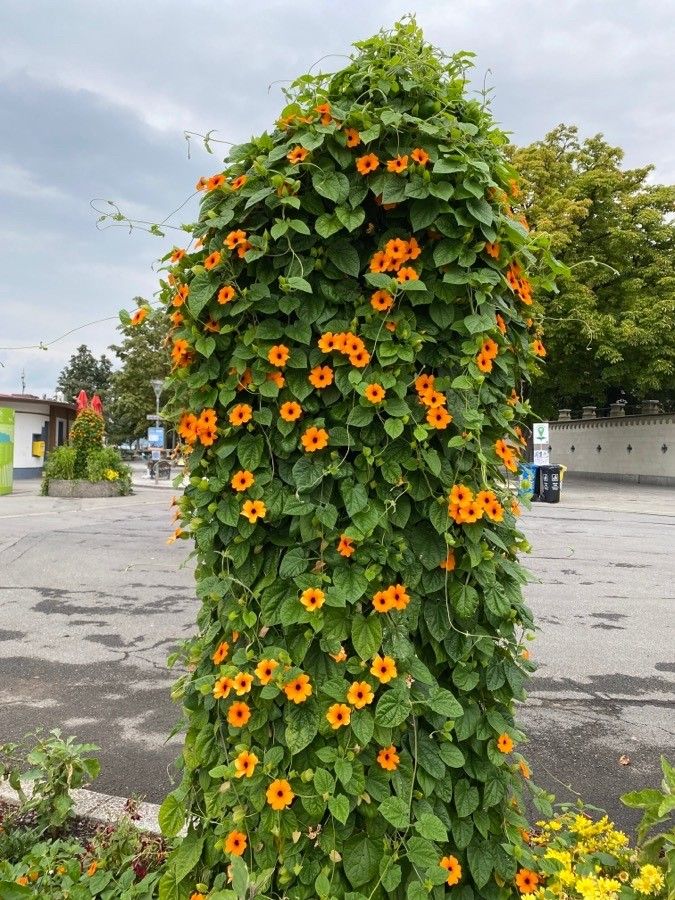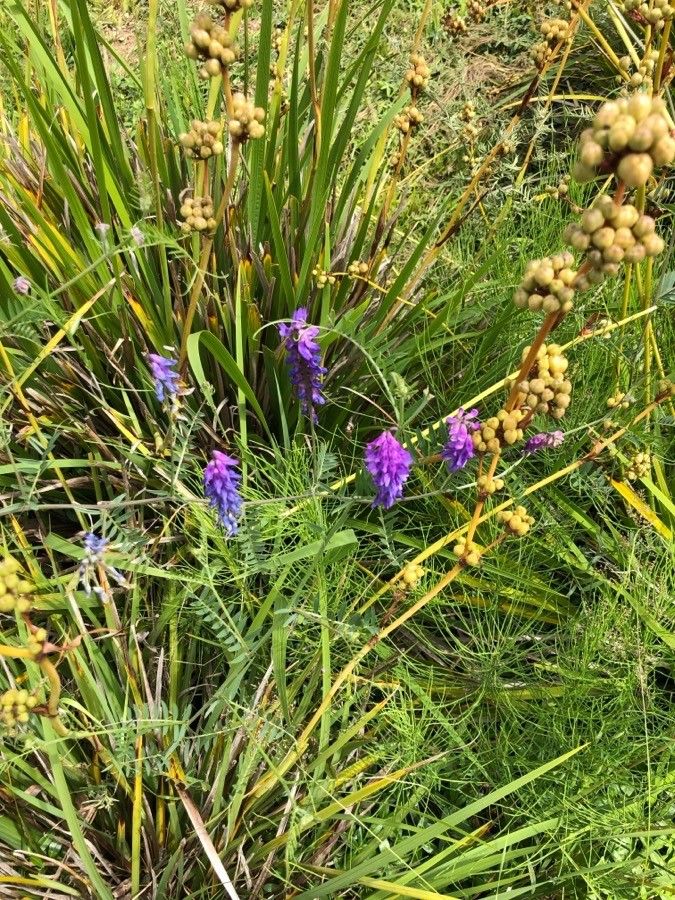## Black-Eyed Susan Vine: A Gardener's Delight
The Black-Eyed Susan Vine ( *Thunbergia alata*), a member of the Acanthaceae family, is a beloved climbing plant known for its cheerful, daisy-like flowers. Its vibrant blooms, boasting a dark center surrounded by delicate petals in shades of yellow, orange, or white, make it a popular choice for adding a touch of summer cheer to gardens, patios, and balconies worldwide.
### Habitat and Growth
Native to eastern Africa, this vigorous vine thrives in warm climates and enjoys climbing using its twining stems. It can reach impressive lengths, making it ideal for covering fences, trellises, or arbors. In cooler climates, it's often grown as an annual, while in warmer zones, it can behave as a perennial, returning year after year.
### Sun Exposure and Soil Needs
Black-Eyed Susan Vine prefers a location with at least six hours of direct sunlight daily. While it tolerates partial shade, optimal flowering occurs with ample sun exposure. The soil should be well-draining to prevent root rot; heavy clay soils should be amended with organic matter like compost to improve drainage and aeration. The vine is relatively adaptable regarding soil pH, thriving in slightly acidic to neutral conditions.
### Planting and Care
Planting is best done in spring or early summer after the last frost. Start seeds indoors 6-8 weeks before the last expected frost, or purchase seedlings from a local nursery. Space plants approximately 12-18 inches apart, ensuring they have adequate support to climb. Regular watering is crucial, especially during dry spells, keeping the soil consistently moist but not waterlogged. Fertilizing once a month with a balanced liquid fertilizer can promote vigorous growth and abundant flowering. Regular deadheading (removing spent flowers) encourages more blooms throughout the growing season.
### Pest and Disease Management
Black-Eyed Susan Vine is generally pest-resistant, but aphids and whiteflies can sometimes be a problem. Monitor your plants regularly and address any infestations promptly using insecticidal soap or neem oil. Good air circulation helps prevent fungal diseases. Ensure adequate spacing between plants to encourage airflow.
### Propagation
Propagating Black-Eyed Susan Vine is relatively easy. Softwood cuttings taken in spring or summer root readily in water or moist potting mix. Once rooted, they can be transplanted into the garden.
### Conclusion
The Black-Eyed Susan Vine is a rewarding plant for gardeners of all levels. With its vibrant flowers, climbing habit, and relatively easy care, it's a fantastic choice for adding a touch of tropical beauty to any garden space. By following these simple guidelines, you can enjoy its stunning blooms all summer long.
Black-Eyed Susan Vine: Planting, Care & Guide

Frequently Asked Questions
How to grow Black-Eyed Susan Vine?
Plant seeds indoors 6-8 weeks before the last frost or buy seedlings. Provide at least 6 hours of sunlight, well-draining soil, and regular watering. Support the vine with a trellis or fence.
What kind of soil does Black-Eyed Susan Vine need?
Black-Eyed Susan Vine thrives in well-draining soil. Amend heavy clay soils with compost to improve drainage. A slightly acidic to neutral pH is ideal.


